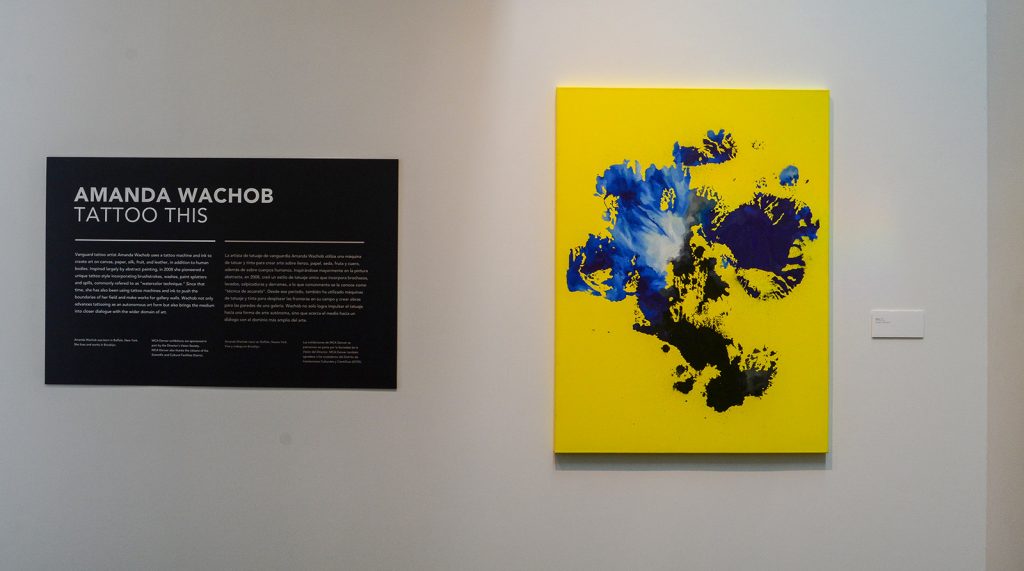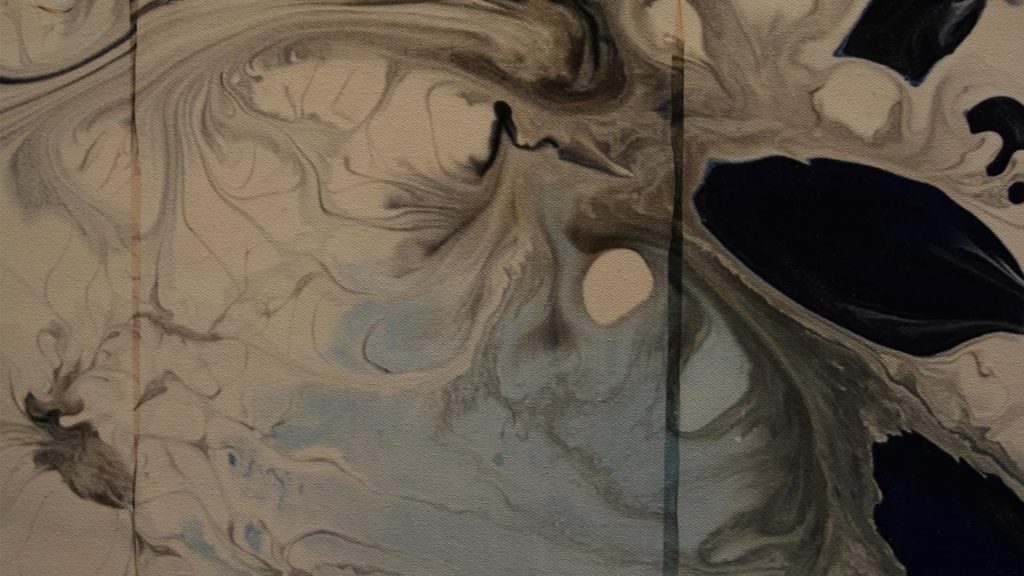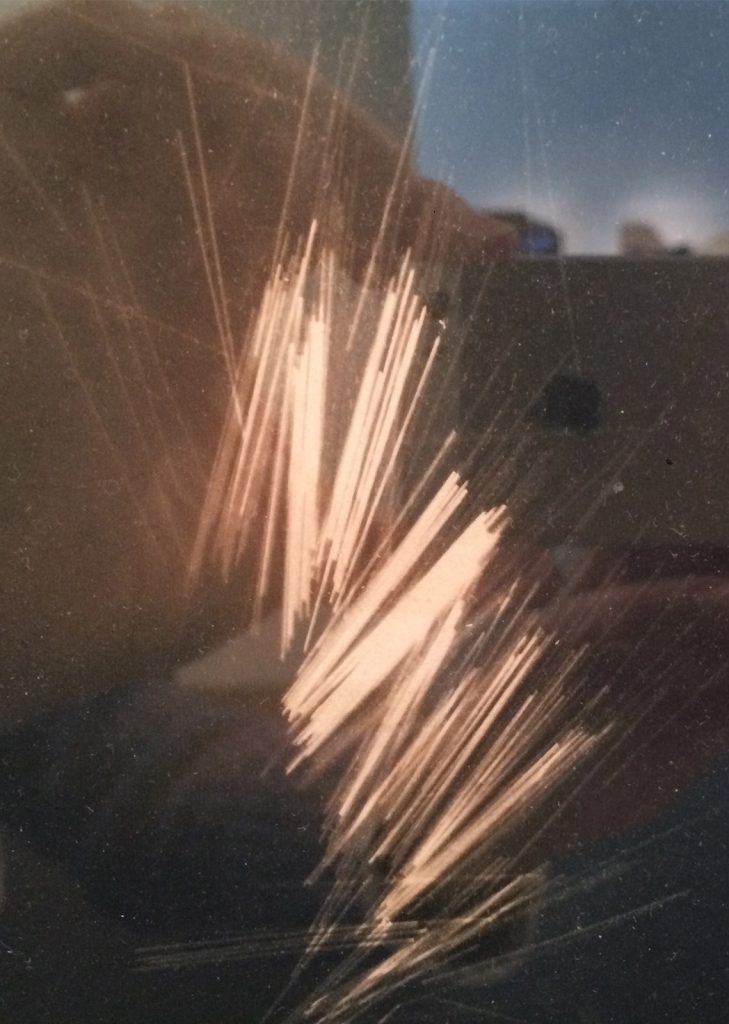Amanda Wachob — Feb 14 – May 26, 2019 – MCA Denver
Snow is white – it is true. To say it is true that snow is white, does not mean we can truthfully call snow white. Or me white.
Put an abstract or semi-non-representational tattoo on this skin of mine and you will see all its variations, textural and color-wise. See the dozens of lemons that Amanda Wachob tattooed in the show – Tattoo This – at the Museum of Contemporary Art Denver and you will see a spectrum of lemon yellow. You will notice the pores on the peel of a lemon as well as a quick flip through Wachob’s encyclopedia of black ink drawings.

When I saw the first ink tattoo in the show, on canvas, and next to the title text of the exhibition, I wondered what her marks would look like on human skin, and then, wondered about how they’d look on other surfaces.
Turning right into the next galleries, there were the answers to my wonders: her drawings on canvas, lamb skin, and photo paper. In the next gallery were big works made on temporary tattoo paper like you’d get out of a vending machine or at a kid’s party. The tattoo paper is placed on a canvas and then – as you would with a temporary tattoo party favor – you apply a moist sponge to the paper and the ink transfers to the surface below.

Other works in this show are less chance based. The marks are produced by a human with a degree in fine art – that’s obvious. But the method of drawing involves a machine that skids and stutters. It’s like drawing a spiral with a backhoe.
One group of works are cyanotype photographs, and delicately beautiful. The basics of cyanotype is that you coat a surface with a photo-sensitive layer, then expose it to the sun (or another light source). Where the sun hits the paper, it turns a color. Where the light was blocked by something solid, the paper remains unchanged and appears black. The objects Wachob has set on the photo layer are tattoo needles and they are fine and tend to skitter out into an array.

We learn in this show that Wachob is interested in 20th Century art movements like surrealism and abstract expressionism, so she tried these styles when tattooing people, and the results are colorful, abstract, graduated and fluid shapes that we don’t expect to see as a tattoo. And these Modern Art tattoos have the added benefit of the details or fineness that the fine lines a tattoo needle can add.
Wachob, I learn, became renown as her tattoo skills increased and were spread among the desirous on social media. And what do people do all the time – they like stuff and then they F4, and copy it and put it somewhere they want it. In my past, I designed jewelry and a big part of the business was making wedding rings. People would bring in a photo of a unique design and ask me to copy it. ‘Sure man,’ I’d snarkily say if I didn’t want to do the job, ‘you’d like to start your marriage commitment with something you ripped off from someone else?’ Apparently this happens to tattoo artists, too. Wachob said she felt ripping off other artists design was particularly anti-meaningful when you put it on your body. And this leads me to think about the permanence of tattoos. They only last as long as the person does, or the lemon. But what if the image someone has chosen is lasting too long already? What if the chosen tattoo was ripped off from someone else’s body and placed on yours reluctantly? There is removal.
Wachob’s cyanotypes make me think about what could be done with removal. And if you’ve ever seen skin that’s been tattooed you know there is plenty of room for removal in this world. I’d start with all the tattoos that aren’t meshing with the surface they are on. Ones that don’t take into consideration that they are on an arm or leg and it is a round surface with lots of variation of color and flow. My wrinkly skin is a beautiful pattern, natural and not dissimilar to something wavelike. Or the musical repetition of line. And there is a tattoo that could take advantage of this texture. It’s obvious to me that Wachob is thinking about her surfaces and her better work does this well. Some of these, she said, were cover ups – fixing existing tattoos with addition. But I can imagine, as well, that tattoo removal put in Wachob’s hands could introduce musical beauty to some bad body art.

